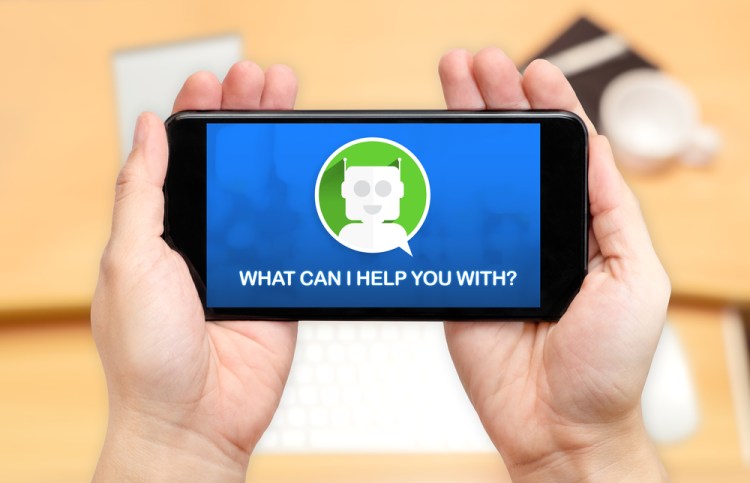Here’s what we know: Chatbots have enormous potential. With bots, brands can have millions of simultaneous one-on-one conversations with fans without sacrificing the quality of the user’s experience. But not all chatbots are created equal, and not all chatbots were made for the same purpose.
Today, there are two major categories of chatbots: utility bots that help users complete simple tasks and conversational bots that aim to learn about the user. The latter, while more complex to make, reap major benefits and have attracted the attention of major movie and entertainment studios like Universal, Disney, Lionsgate, and Blizzard.
While these companies are recognized masters of storytelling, they also prove that characters, content, and narrative can be seamlessly adapted to messaging and conversational interfaces. For brands and marketers, however, there are four key things to keep in mind if they’re looking to build a chatbot for their business.
Purpose
When ideating for your brand’s chatbot, be sure to ask the how, why, and what. How does this benefit your audience and how will they interact with it? Why would they want to engage with this chatbot and why through this particular channel? What exactly do they want to get out of it?
June 5th: The AI Audit in NYC
Join us next week in NYC to engage with top executive leaders, delving into strategies for auditing AI models to ensure fairness, optimal performance, and ethical compliance across diverse organizations. Secure your attendance for this exclusive invite-only event.
Chatbots offer exciting possibilities to perform a variety of functions, but they’re only effective when the purpose and use case is clear. The user experience must be dictated by the brand. An open-ended chatbot is sure to offer a disjointed user experience that accomplishes little.
One caveat to this is that the overarching experience and brand message must remain constant regardless of the chatbot purpose. Whether your goal is to create buzz around your brand, simply entertain the user, guide users through a specific step in the customer funnel, or collect insights to qualify the customer, chatbots give the opportunity to create memorable experiences that increase brand loyalty.
Personality
Your chatbot needs a name. But more broadly speaking, your chatbot needs to have a unique personality, one that truly personifies the brand that it represents. It should sound and feel somewhat human and relatable, and it should endear itself to the user. The idea isn’t to fool users into thinking that they’re speaking with another human, but rather to make them smile and actually enjoy their interaction with the bot and its parent brand. This should integrate with the brand voice in other ad formats like print or television.
Something to remember is that a chatbot is an entity with humanlike characteristics. It loves and hates certain things; it has a certain way of speaking; it has a certain tone of voice; it can be humorous or serious, optimistic or pessimistic. If it’s aligned with the overall brand voice and properly executed, a chatbot can feel like a friend, facilitate sales, and help brands grow.
Conversation
One of the main benefits of a chatbot is that it offers a two-way conversation between brand and customer. Brands can leverage this by creating an experience through conversation and interaction that leaves a long-lasting impression. Sure, it might serve the purpose of completing a task or sharing information, but did it really engage the user? What’s the purpose of having an interaction if users can’t speak to the brand’s chatbot like they speak to friends?
In private conversation, people share insights and answer questions. This information benefits future engagements and builds a relationship. Without conversation — real conversation, which is naturally flowing and independent of pushing buttons in the chat window — the chatbot experience is underwhelming.
It’s a big investment, but chatbots that are equipped with advanced natural language processing (NLP) capabilities are better positioned to engage the user. When the chatbot can understand real human language, and reciprocate, that’s when the user is most likely to re-engage in the future.
Discovery
Once your chatbot has a goal and is built with true conversation functionality, the final step is promoting the chatbot. As with any marketing content such as video, web experiences, or apps, it must reach its target audience to find success. Be sure to plan how the chatbot will be discovered. Some brands may include their bot directly on the company website as a pop-up. Others may promote their bot via email and social media marketing. Brands may even entice engagement with the chatbot by allowing experiences or offerings that may only be found by conversing with the chatbot. For instance, a movie may offer behind-the-scene exclusive content only viewable through the chatbot or a retail brand may advertise special coupons available only through the bot.
Brands should consider their target audience for the chatbot when deciding the ways the brand will be promoted. For example, if the target audience is millennials, a brand may promote via social media platforms like Facebook, Instagram, and Twitter.
Launching a chatbot is an exciting initiative, one that can be highly rewarding for brands and customers alike. The chatbots of tomorrow will be built around optimizing the quality, depth, and engagement time, becoming much more than the novelty experiences we see now.
Seth Greenfield is the CEO at Imperson Studios, a bot platform.


